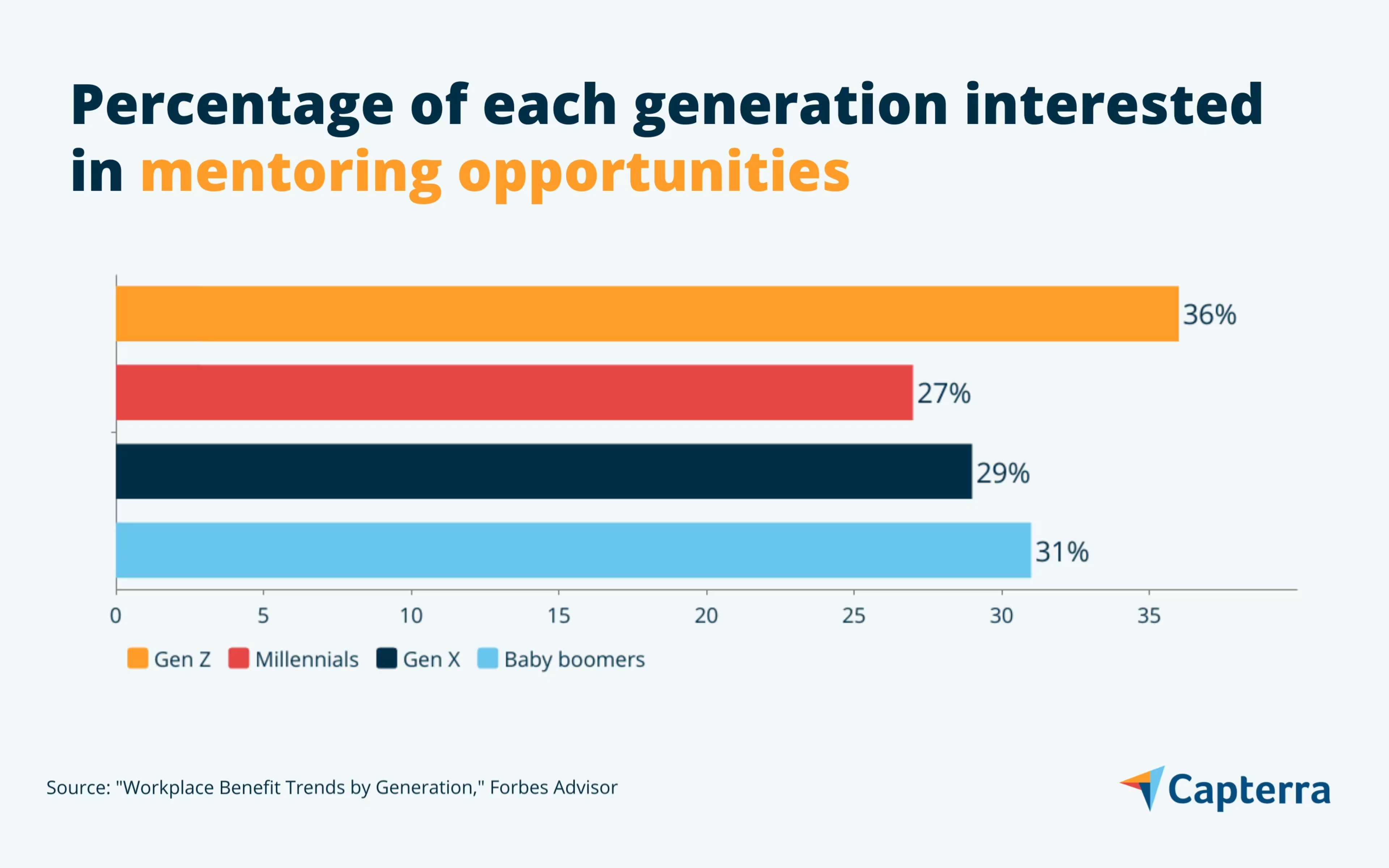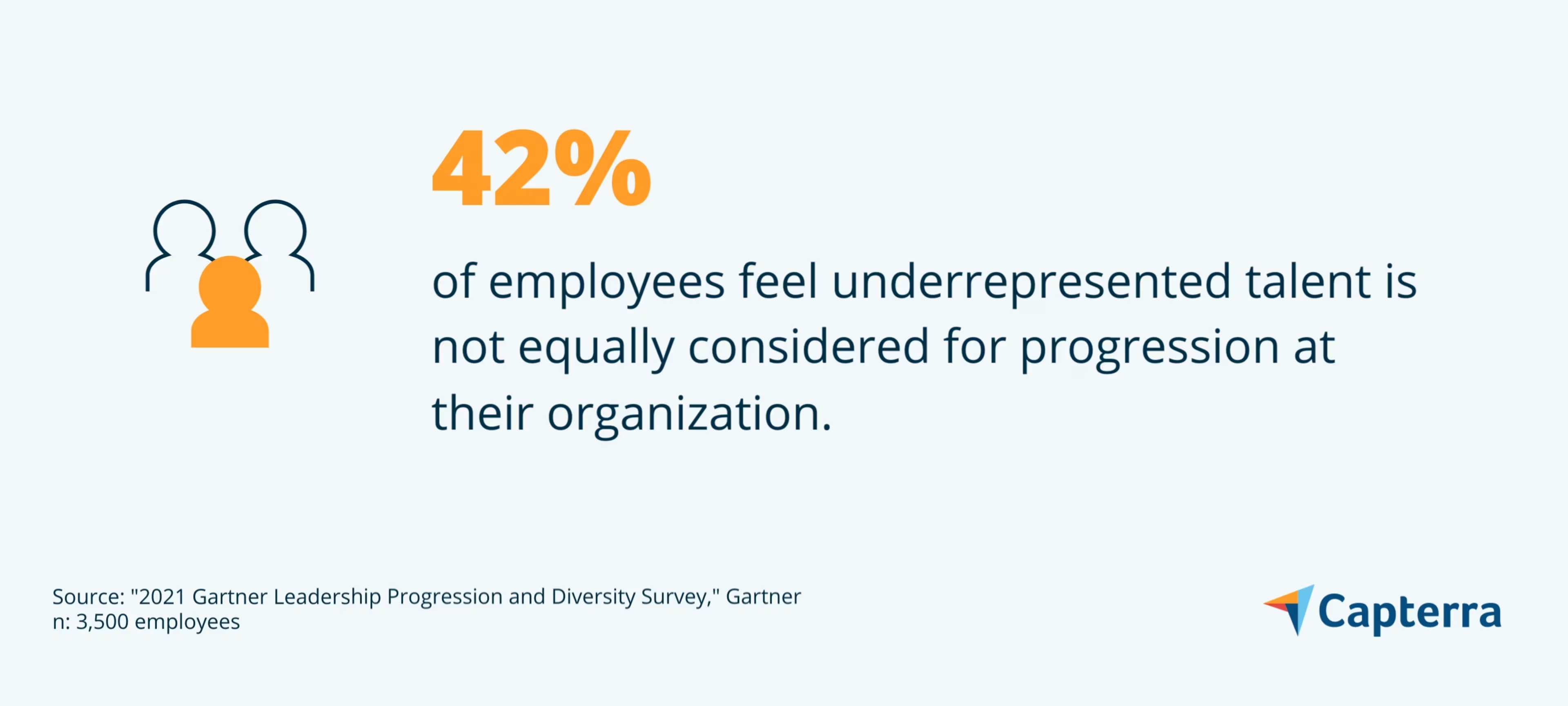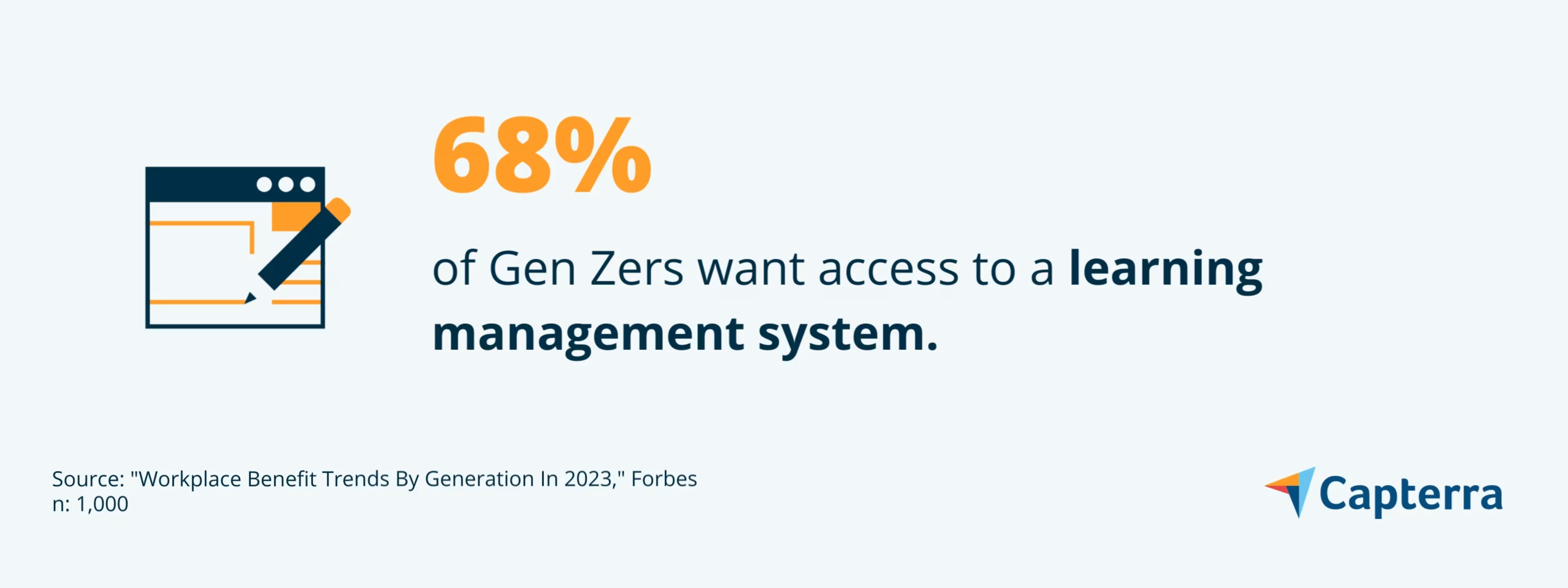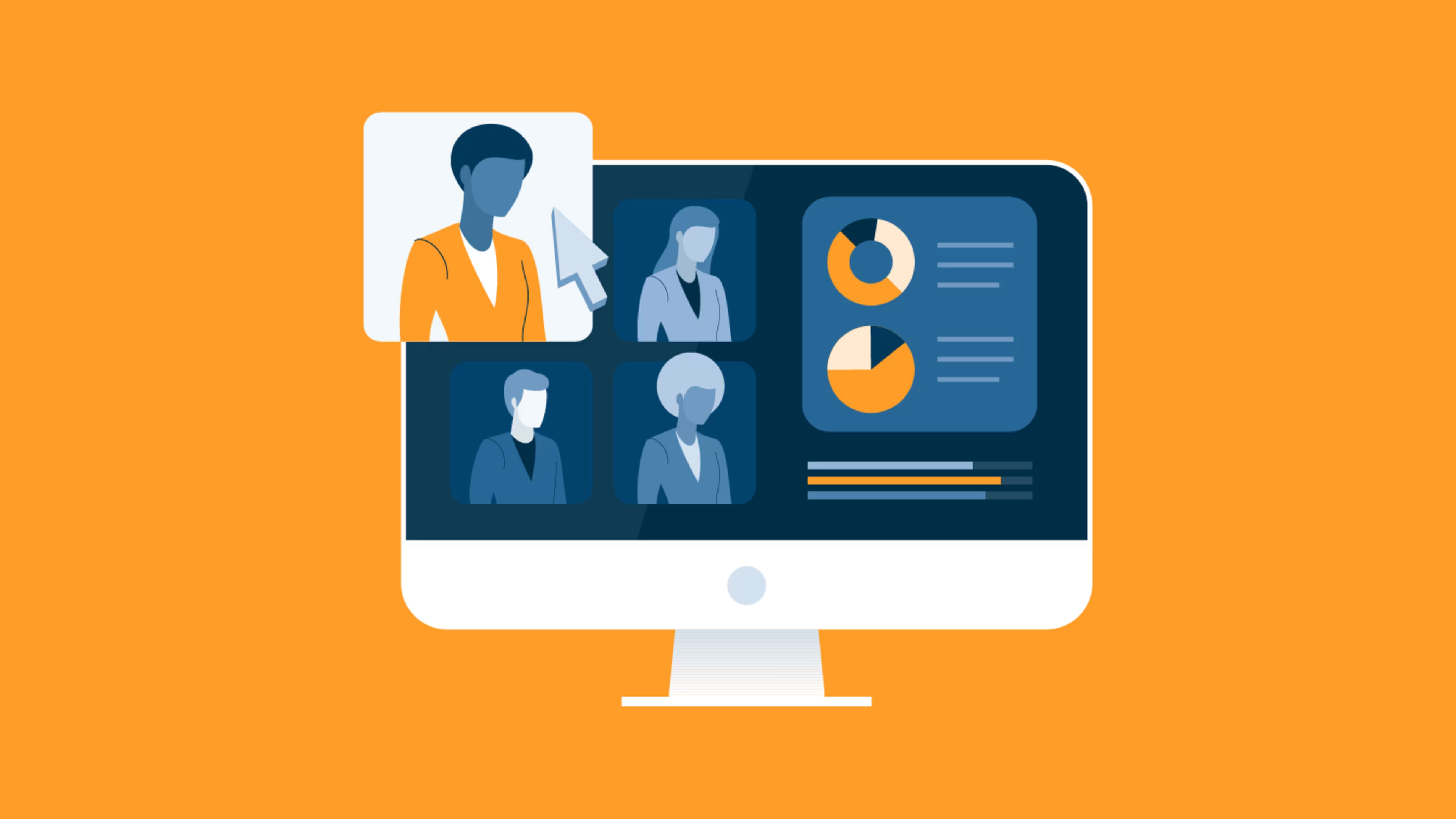Embrace the generational diversity of your workforce with these three strategies.
Thought diversity is good for business, and we have evidence to prove it: Leaders who proactively seek diverse viewpoints experience 45% higher rates of successful business innovation, revenue, and global scale, regardless of their industry or business sector.[1]
For people directors and team leaders who want to improve thought diversity, the instinct might be to hire more diverse talent. And while that’s certainly an effective strategy, there’s a more obvious option you’re likely overlooking: Start taking advantage of the age diversity within your organization first.
There are currently four different generations in the workforce, each with a unique perspective and set of skills to offer. That means that people leaders hoping to increase thought diversity need only learn how to recognize and harness the viewpoints of each generation already present in their organization.
Ahead, we’ll introduce you to three different strategies that can help you leverage generational differences and in turn, increase thought diversity.
What is thought diversity?
Thought diversity is the range of perspectives, thought processes, and points of view that can be found within an organization’s workforce. Thought diversity is rooted in the reality that there is always more than one way to approach a problem, and the greater the variation in unique perspectives, the greater the thought diversity. Because of this, thought diversity can be thought of as an outcome of an effective DEI strategy.
A recent Gartner survey revealed that the key theme behind the “Great Resignation” was that over 50% of employees want to contribute to meaningful work that drives change.[1]
Providing opportunities for employees to share their ideas and perspectives can help drive this. More diverse ideas can inspire the creation of new products and services and better internal processes, and this benefits businesses twofold: First, they get the aforementioned advantages of thought diversity, and second, they improve talent retention by creating a work environment where every employee feels their voice is valued and heard.
Familiarize yourself with the generations currently in the workforce: A Guide to Understanding Intergenerational Differences in the Workplace
3 strategies for turning generational differences in the workplace into thought diversity
1. Start a reverse mentorship program
Reverse mentorships flip the traditional mentoring dynamic by having less-experienced, younger employees “mentor” a more senior counterpart. Oftentimes, the purpose is to increase understanding between employees from different backgrounds, but they can also be used to upskill. Either way, deploying a program of this nature can contribute to thought diversity by creating a framework for employees of different generations to learn from one another.
Examples of reverse mentoring pairings:
A Gen Z employee explaining TikTok’s promotional potential to a baby boomer marketing executive.
A Gen X director learning about the communication preferences of younger employees from a Gen Zer.
A millennial employee sharing their perspective on inclusivity with a Gen X people director.
A survey from Forbes found that the two generations who were the most interested in mentoring opportunities were Gen Zers (36%) and baby boomers (31%), which bodes well for the potential of a successful reverse mentoring program.[2]

Starting a reverse mentorship program requires a few initial steps:
First, define the goals of the program: Whether you’re using the program to increase understanding around generational differences or upskill employees, it’s important to get specific about the intended outcome upfront.
Set expectations for participants: Make it clear how often mentors and mentees are expected to meet, how long each meeting should be, and what the topics of discussion should cover.
Recruit participants: Promote your program through internal communication channels and put the call out for volunteers. Aim to have a diverse mix of participants from different areas of the business.
Coordinate pairings: Ask participants about their preferences early on. For example, you can create an initial questionnaire with questions like, “Do you prefer that your mentor/mentee be the same gender as you?” or “Would you prefer to meet virtually or in person?”
Host an orientation session: Before mentors and mentees meet for the first time, kick off the program with an orientation. Use this time to communicate the goal of the program and outline expectations for participants. Consider having participants sign an agreement during this session that details their personal development goals, their expectations for the relationship, and the logistics of how they plan to meet in the future.
Want help facilitating a reverse mentoring program? Browse mentoring software.
2. Train hiring teams to recognize unconscious biases
When bias impacts hiring decisions, any hope of building a diverse workforce is thwarted. For instance, even promoting an individual based on their seniority level can be counterproductive, because there may be another team member with a skillset better suited for the role (regardless of their tenure or age).

In the context of generational differences, the primary bias to look out for is age bias (or ageism). Ageism refers to the stereotypes, prejudices, and discrimination projected onto others based on their age, and while historically it’s been thought of as impacting older individuals the most, the truth is that employees from any generation may experience age bias. In fact, the term “youngism” has been used to describe a form of bias that conflates age with maturity level and propels the misperception that tenure is required for competency.
Here’s the bottom line: Training hiring teams to recognize and minimize the impact of biases will help ensure that the right talent is in the right place. Take these next steps to further minimize the impact of age bias on hiring decisions:
Avoid using terms like “recent college graduate,” “experienced professional,” or “digital native” in job descriptions as they hint at a specific age group.
Reward employees’ accomplishments (not tenure). Even if an employee has worked at your organization for years, they might not be performing at the same level as their newly hired peers. For that reason, we suggest relying on employee performance metrics to make decisions related to promotions and bonuses.
Create age-diverse hiring teams. The goal should be for interview panels to represent the generational diversity present in your workforce. If your HR team is age-homogenous, you can recruit an employee from the team the open role is within to sit in on the interviews.
3. Foster a strong learning culture
In order for thought diversity to thrive, there needs to be a willingness amongst employees to learn from those around them. Cultivating a work culture that encourages continuous learning helps lay the groundwork for this by encouraging employees to seek out new ideas and information often.
As an added bonus, promoting a continuous learning culture as a part of your employer brand can help attract forward-thinking talent. But in order to create a learning culture that all of your employees want to participate in, it’s important to understand the kinds of development experiences that each generation is most interested in.
Forbes’ Workplace Benefits survey revealed that companywide training from other departments appeals the most to Generation X (55%), millennials (60%), and baby boomers (61%). Generation Z, however, is more interested in self-paced, virtual learning than other opportunities[2]:

Additionally, stipends for continuous learning were the third most sought-after development perk amongst employees of all generations (49%).
Here’s what to do next to cultivate a continuous learning culture:
Invest in a learning platform or a learning management system (LMS). We suggest investing in a platform that comes with a pre-built course library that employees can explore on their own time. Alternatively, you can offer a stipend for continuous learning and encourage employees to use it to enroll in courses online through platforms such as Udemy, LinkedIn Learning, or Coursera.
Launch a social learning program. Social learning is a particularly good strategy to introduce in order to promote intergenerational collaboration within your workforce. Read our guide How To Launch a Social Learning Program for in-depth guidance on kicking an initiative of this type off.
Get leadership involved in learning. Executives set an example for the rest of the workforce within an organization, so it’s essential to have them actively support and engage with learning initiatives. A simple way to do this is to encourage leaders to share something new they’ve learned recently during company-wide meetings.
Unite your multigenerational workforce to reap the benefits of thought diversity
Seventy-eight percent of employees believe that having a multigenerational workplace can cause conflict.[3] But instead of allowing generational differences to cause divisiveness within your workforce, start using them to your business’s advantage by putting the strategies covered in this guide into action.
As a final recap, those strategies are:
Start a reverse mentorship program
Train hiring teams to recognize unconscious biases
Foster a strong learning culture
Then, familiarize yourself with the characteristics of each generation with our related content: A Guide to Understanding Intergenerational Differences in the Workplace

